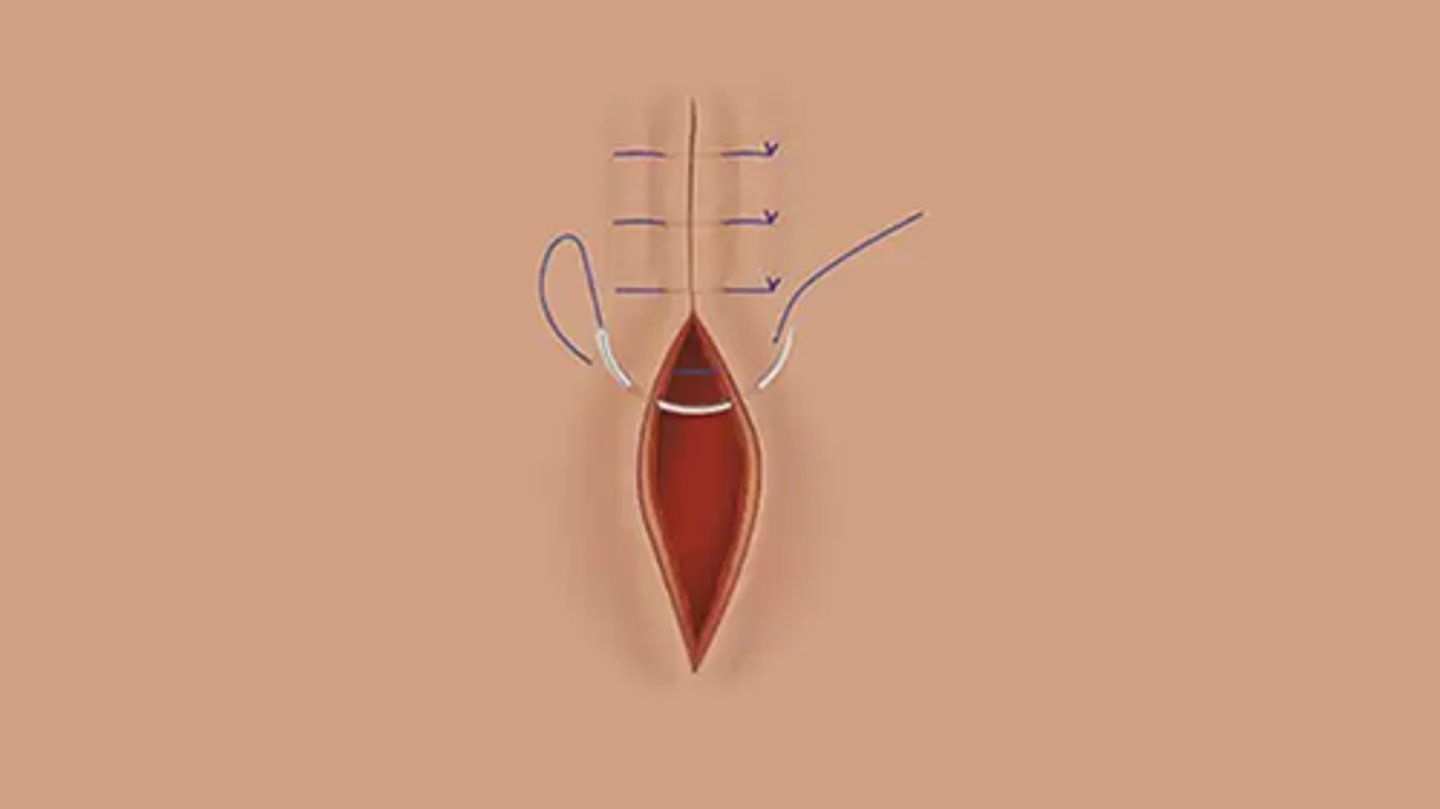Suture
1/20
There's no tags or description
Looks like no tags are added yet.
Name | Mastery | Learn | Test | Matching | Spaced |
|---|
No study sessions yet.
21 Terms
Scalp
5-0/4-0 monofilament
ear
6-0 monofilament
Eyelid
7-0/6-0 monofilament
Eyebrow
6-0/5-0 monofilament
nose
6-0 monofilament
lip
6-0 absorbable monofilament
face / forehead
5-0/6-0 monofilament
trunk
3-0/5-0/4-0 monofilament
extremities
3-0/4-0 monofilament
hand
5-0 monofilament
foot/sole
4-0/3-0 monofilament
oral mucosa
5-0 absorbable monofilament
simple interrupted sutures
general tissue approximation, can be used for most wounds
simple running sutures
provides a faster closure and uses less suture, but is not as strong as interrupted stitches
used to close layers where there is little tension, but tight closure is required
All sutures are lost if 1 is removed
Horizontal mattress
This is done to evert the wound in high tension areas or if there is a flap of tissue

vertical mattress
Used when suturing a flap or closer DEEPER wounds (scalp), in which closure occurs at two levels (superficial and deep), eliminating dead space
*far/far/near/near

If:
-speed is important, fewer knots
-water-tight
-long wound
-even tension distribution (minimal to no overall tension)
-approximation of wound edges is good
Continuous running suture/ simple running suture
If:
-need suture with great tensile strength
-small wounds
-involve full-thickness of the skin
-if need to make selective adjustments of skin edges
Simple interrupted suture
If:
-decrease dead space
-use in high tension areas
-provides increase strength
-body site where wound edges tend to invert, ex: posterior neck or concave surfaces
Vertical mattress suture
If:
-decrease dead space
-use in high tension areas
-provides increase strength
-help to evert wound edges where skin naturally inverts
Horizontal mattress suture
far/far/near/near
vertical mattress